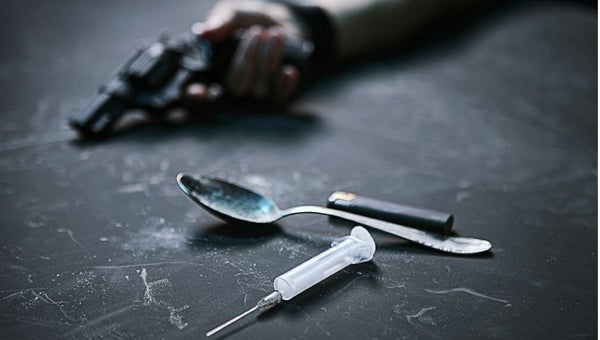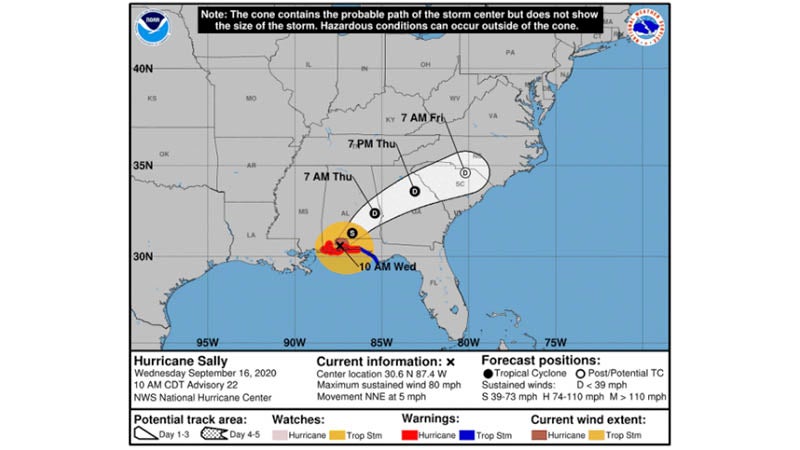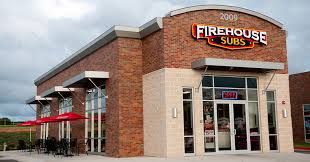IN HEROIN’S CHAINS
Published 12:05 am Saturday, April 11, 2015

Heroin usage and its effects are on the rise in Covington County. Law enforcement has seen heroin-related deaths and overdoses in recent months.
Deaths, overdoses attributed to drug use
It’s a growing trend in Covington County – heroin use.
Law enforcement agencies, drug treatment facilities and others tasked with helping curb drug usage have seen it.
District Attorney Walt Merrell said in recent months there have been confirmed heroin addicts who have taken their own lives in Covington County.
“We’ve had some overdoses as well where it was confirmed they were using heroin or heroin and other drugs,” he said.
According to the DEA’s National Drug Threat Assessment Summary, the threat posed by heroin in the country is increasing.
The report says that four geographic areas – South America, Mexico, Southwest Asia and Southeast Asia – produce the world’s heroin supply.
For the last 20 years, U.S. retail heroin has been divided along the Mississippi River with Mexican black tar and brown powder heroin dominating west of the Mississippi and South American white powder heroin more common East of the river.
Reports from all levels of law enforcement indicates that heroin availability is increasing.
“What makes heroin attractive is that it’s cheap,” Merrell said. “It’s cheaper than meth and it’s cheaper than cocaine.”
Sources say a stamp bag of heroin costs around $10 a bag on average, but can cost as little as $4.
Merrell said that drugs come in cycles in Covington County, noting that cocaine and meth were once the big threats.
“Now, heroin is coming back around,” he said. “It’s a very dangerous drug. Most people don’t realize it’s a synthetic drug and there is no regulatory committee that enforces its sale.”
Drug Task Force Agent Greg Jackson found a gold mine of drugs, including 15 grams of heroin in February during a traffic stop on U.S. 29, which was the largest bust “in a while” for DTF.
In August 2014, Florala Police Department nabbed four for trafficking heroin.
Jackson also arrested a man in March 2014, who had 2 to 3 grams of heroin in his possession.
Jackson said this heroin is definitely a growing problem in the county.
Additionally, officials at Crossover Ministry said they are also seeing a rise in heroin addicts come through the doors.
“Ten years ago, meth addiction was horrible,” said Red Coleman, who is both a Crossover graduate and a member of the Crossover team. “And we still have meth addicts come through here, but what we are seeing is a rise in prescription pill addictions and even heroin now.”
Covington County isn’t the only county that experiences such issues.
In fact, statewide there has been an increasing number of deaths due to heroin and other opiates.
The increasing number has prompted lawmakers to propose a bill that would allow family members and friends of drug addicts to have a drug that would reverse overdoses.
Additionally, it would allow police officers to be trained to allow officers to carry the drug.
The drug is called Narcan, also known as naloxone, which works by preventing or reversing the effects of opioids including respiratory depression, sedation and hypotension.
The bill is sponsored by Rep. Allen Treadway, who is a Birmingham Police captain.
Narcan causes immediate withdrawal.
Some 28 states have increased the public’s access to Narcan, which has resulted in some 10,000 overdose reversals.
It can be nasally-administered and is not harmful to people who are not suffering from opioid overdose.
Last year, the U.S. Food and Drug Administration approved a naloxone hand-held auto-injector called Evzio, which rapidly delivers a single dose of the drug into the muscle or under the skin, according to drugabuse.gov.
Studies show that heroin abuse is 19 times higher among those who had previously abused pain relievers.
The addicts are moving on from abuse of opioid prescriptions for drugs such as Vicodin or Oxycontin.
From 2007 to 2011, heroin-related treatment to publicly funded facilities increased 6.3 percent from 261,951 to 278,481.
Perception among youth has changed, according to the DEA study.
“The percentage of students who said heroin would be either very easy or fairly easy to get had been decreasing for all grade levels from 2004 to 2012. Still, between 2012 and 2013, the percentage stayed static for 10th graders, but increased for eighth graders and seniors.”
Merrell noted that the war on drugs is pertinent to decreasing crime and child abuse.
“If we cut out drug usage, two-thirds of crime and child abuse would be eliminated,” he said. “The majority of major assaults, murders and other violent crimes are directly related to drug abuse.”




